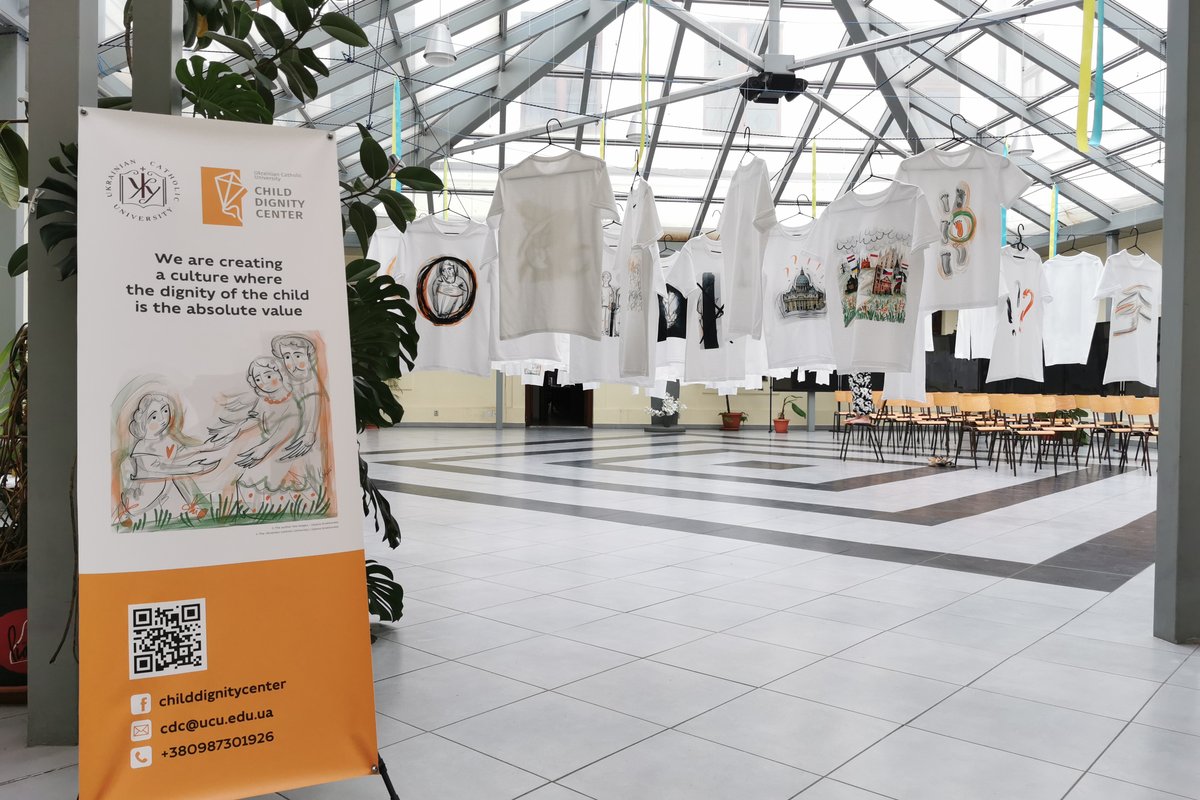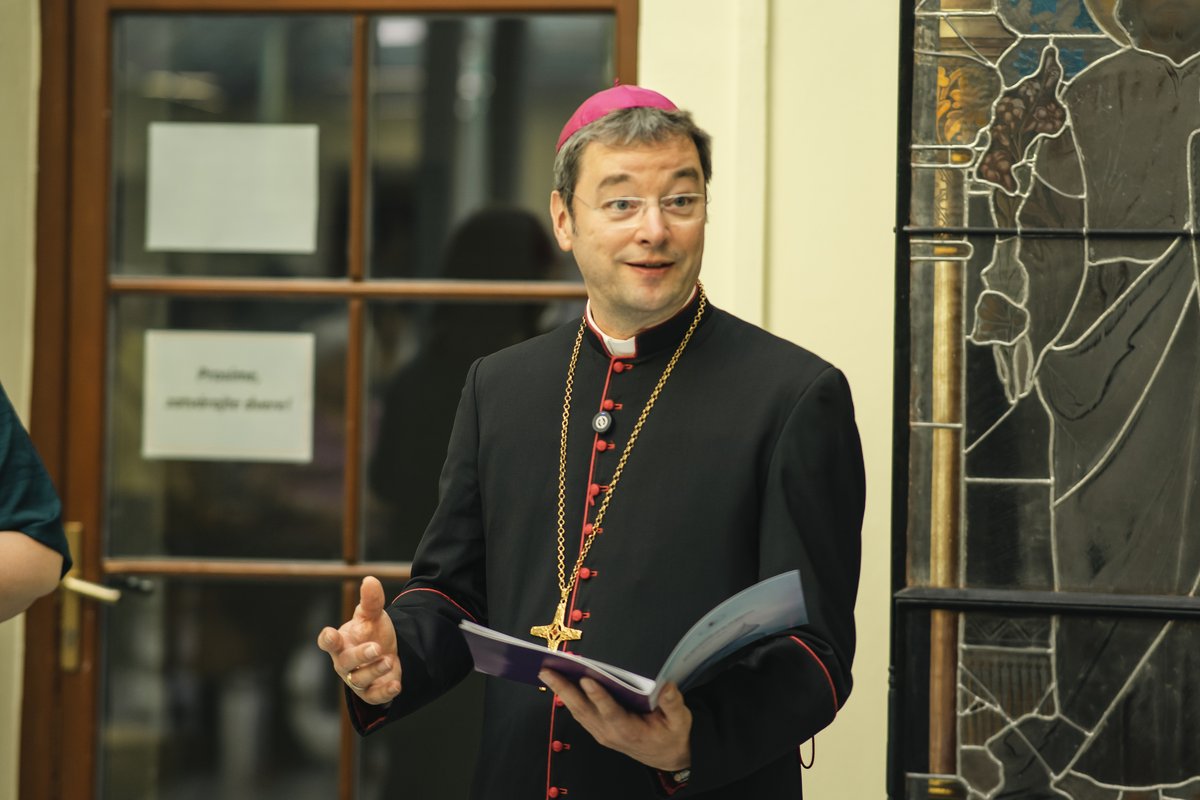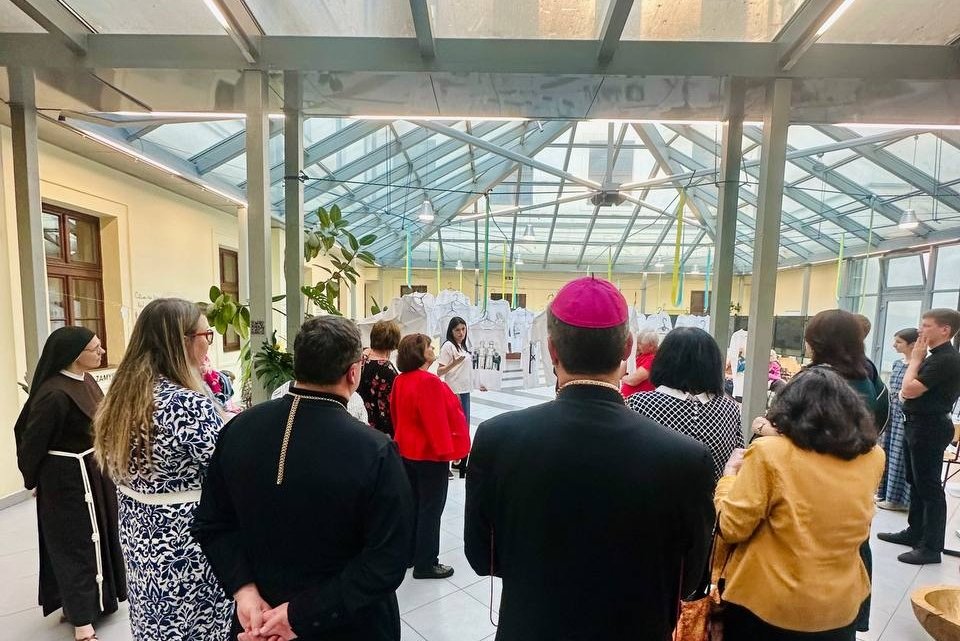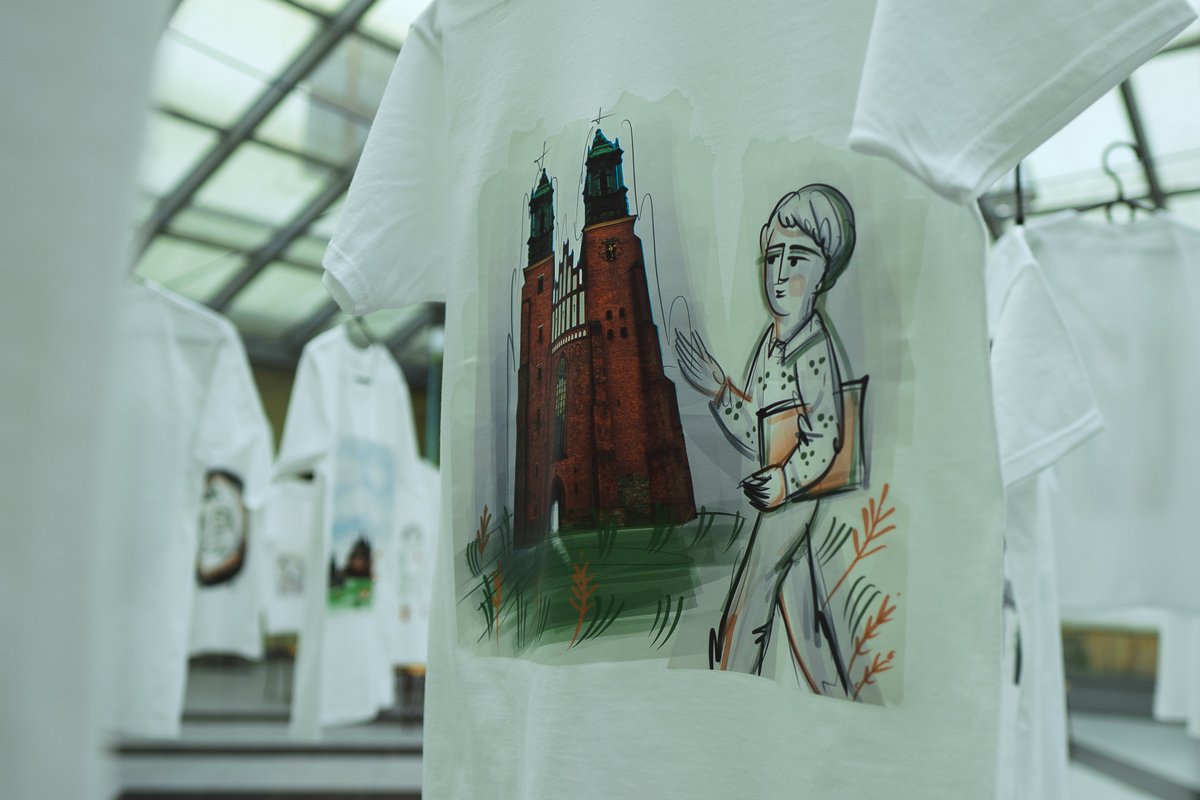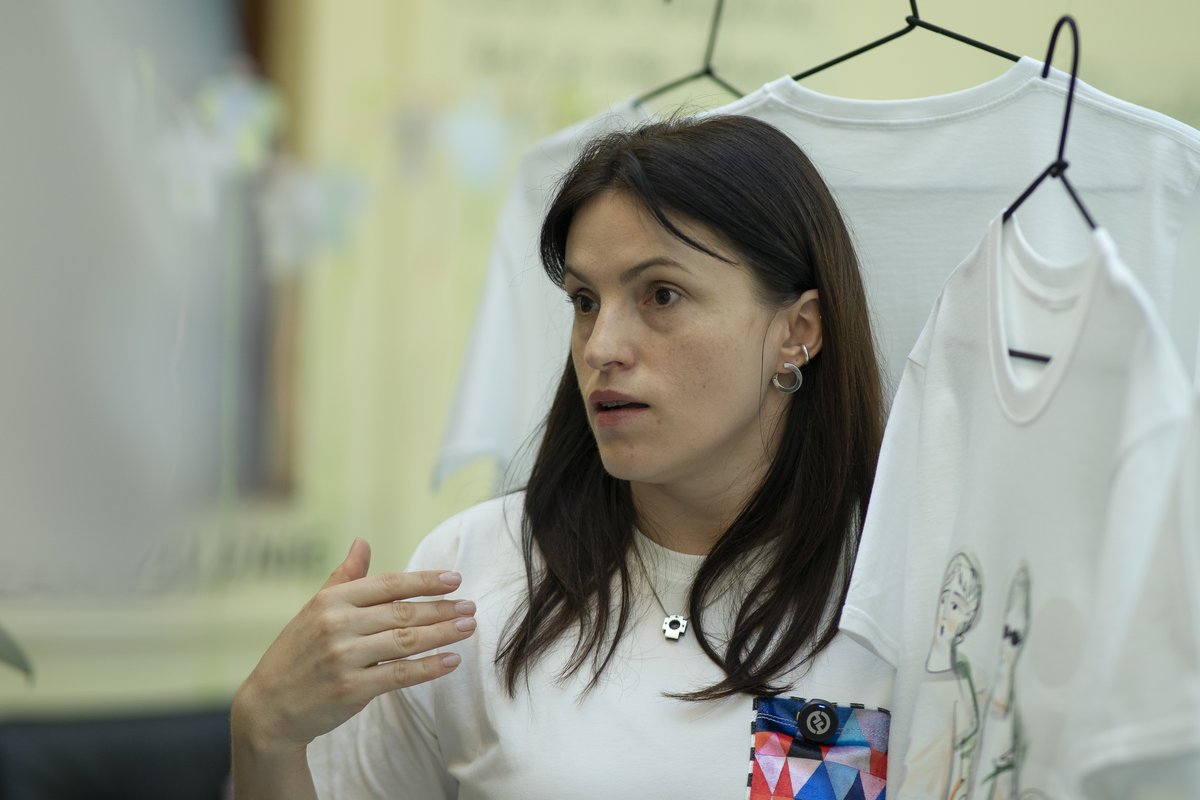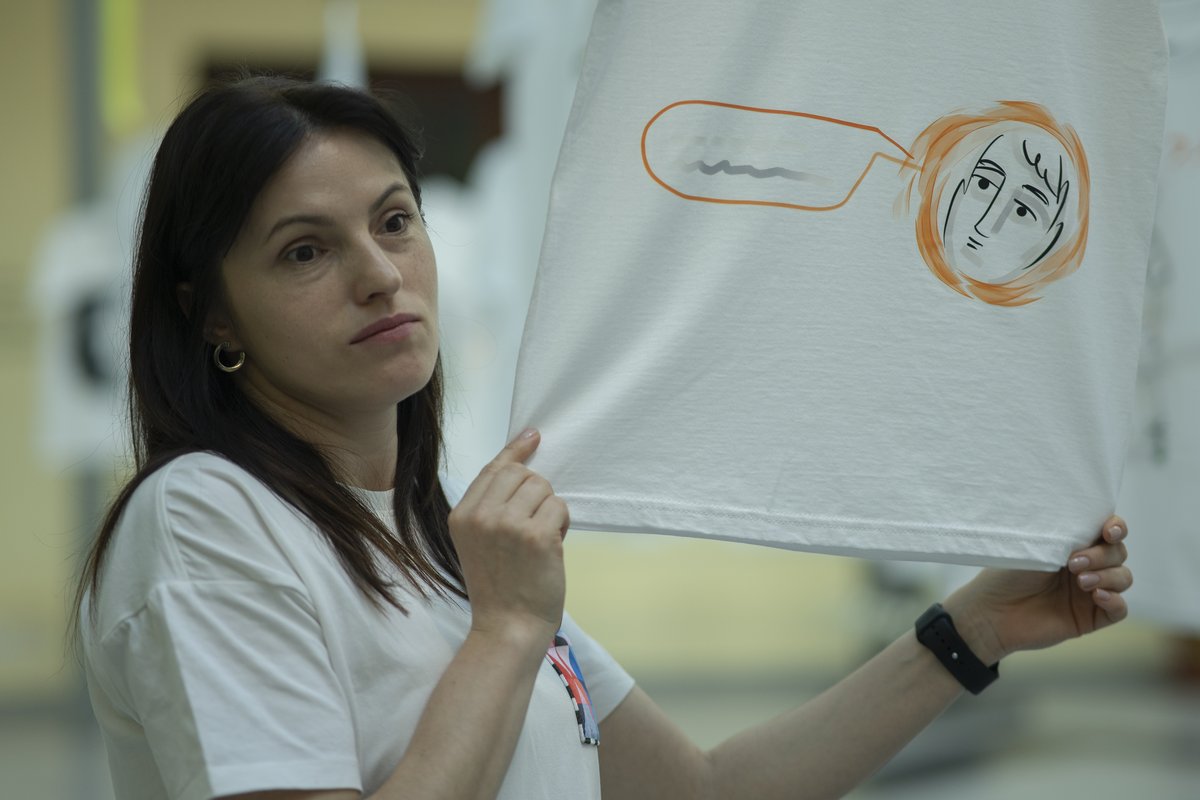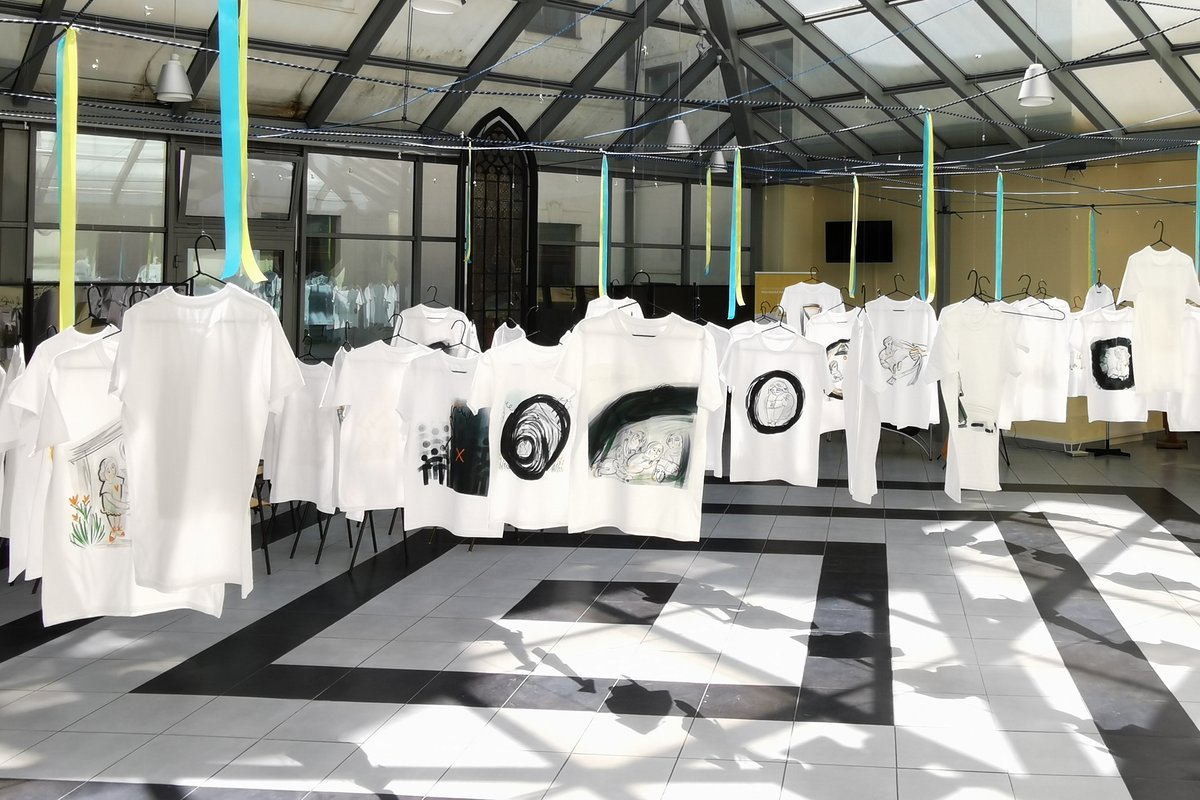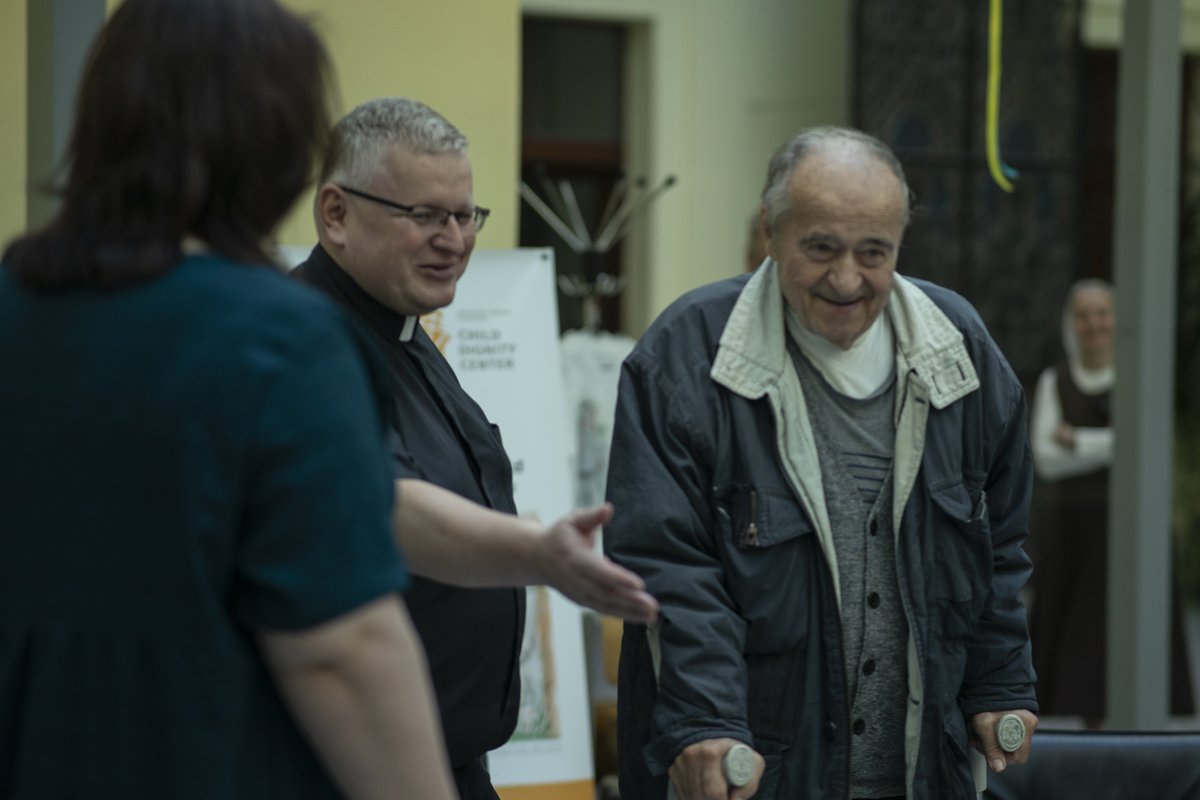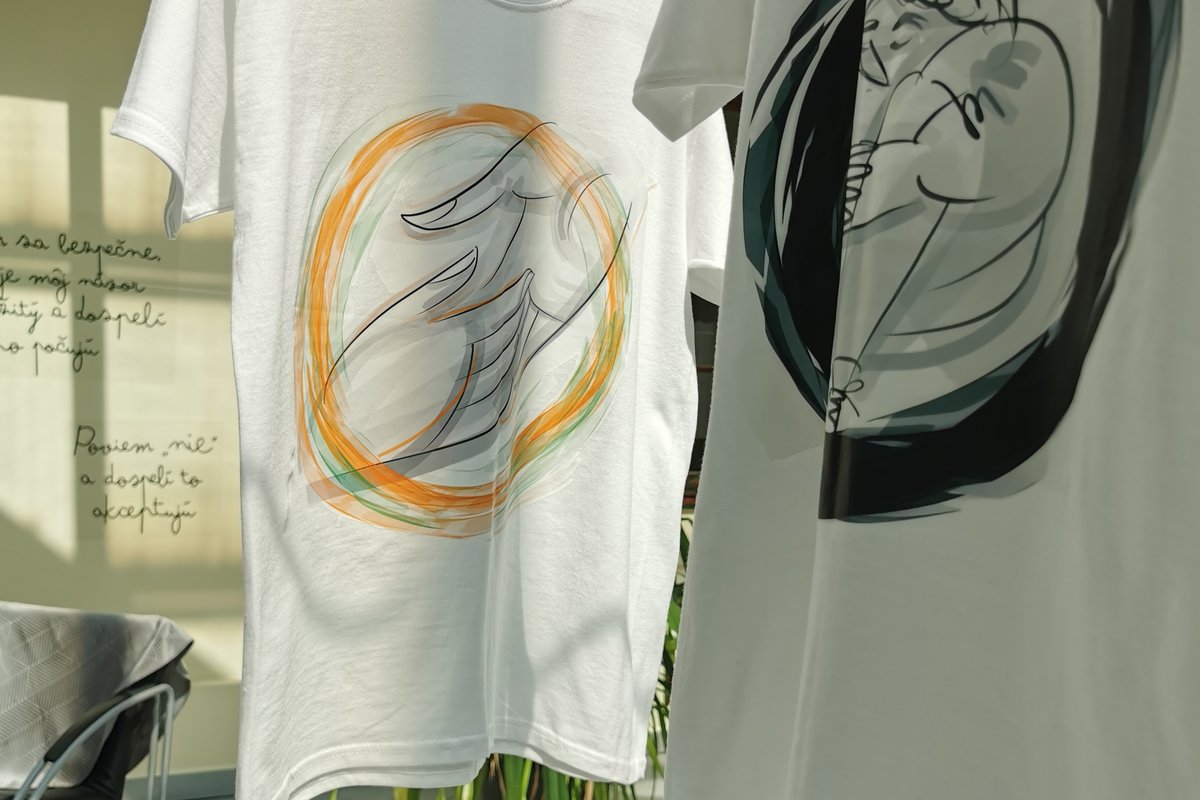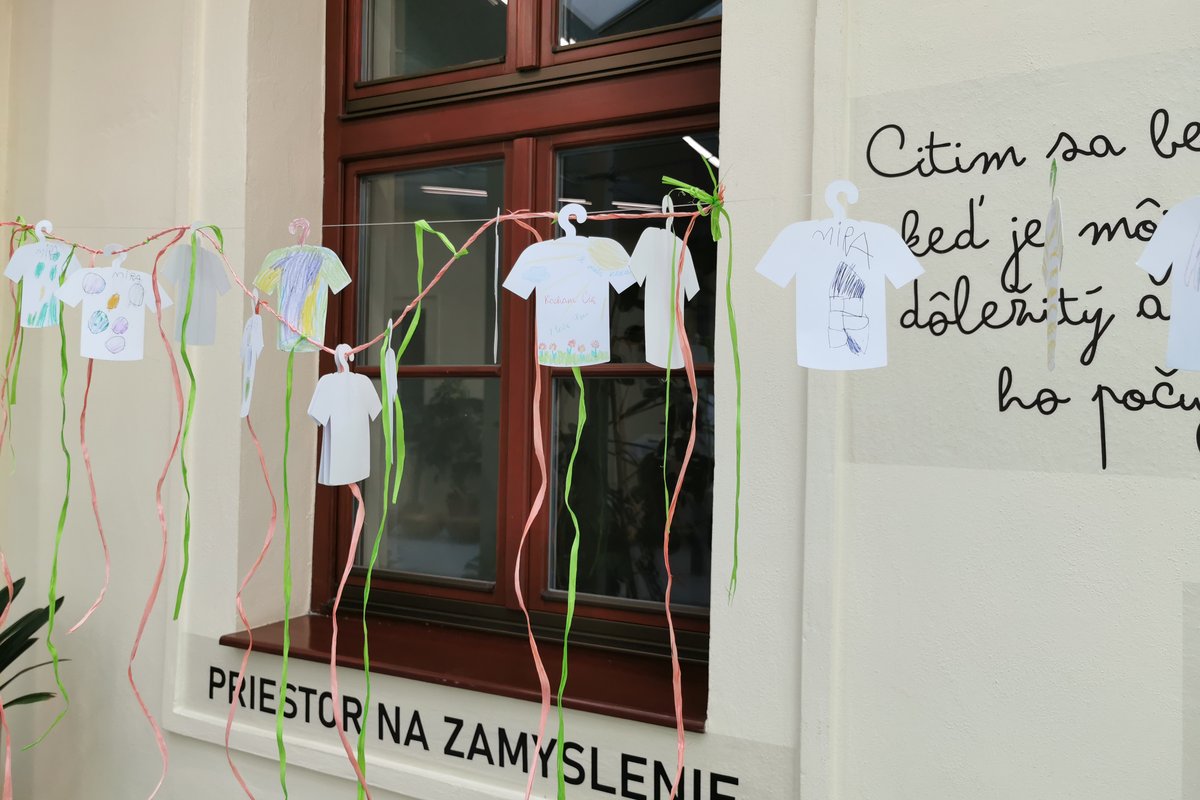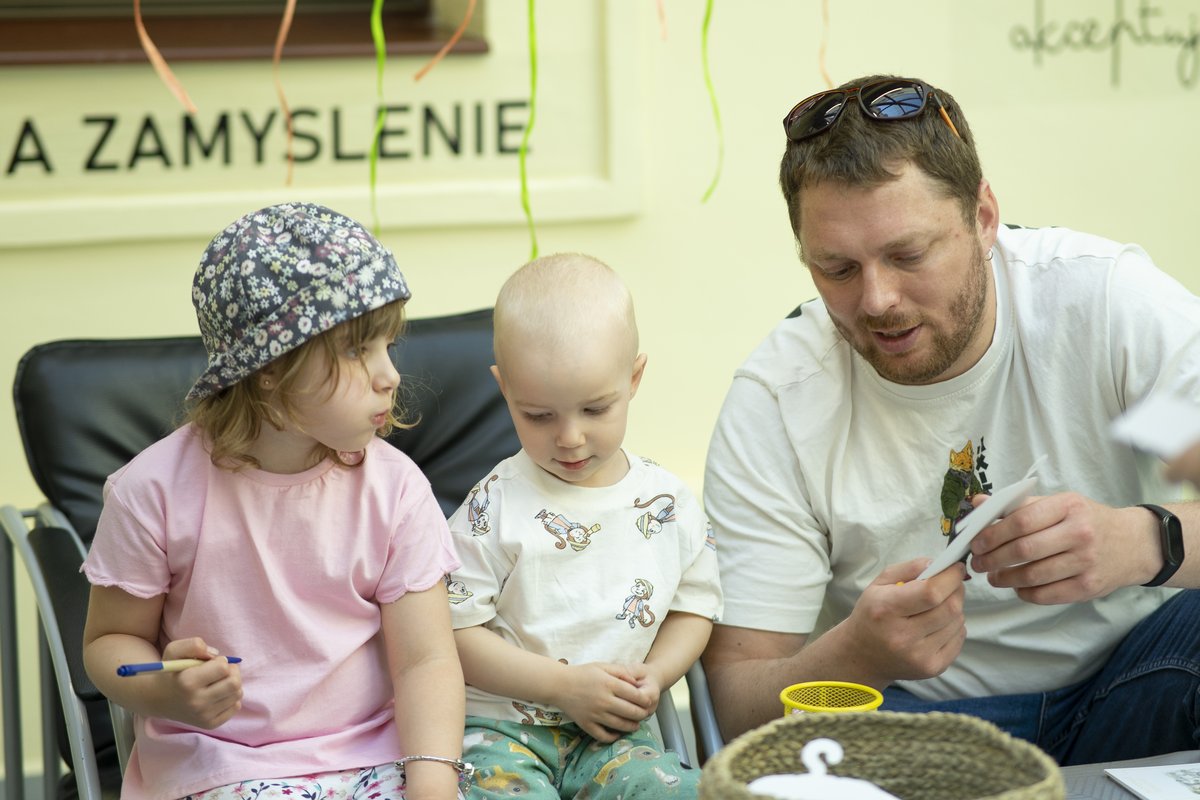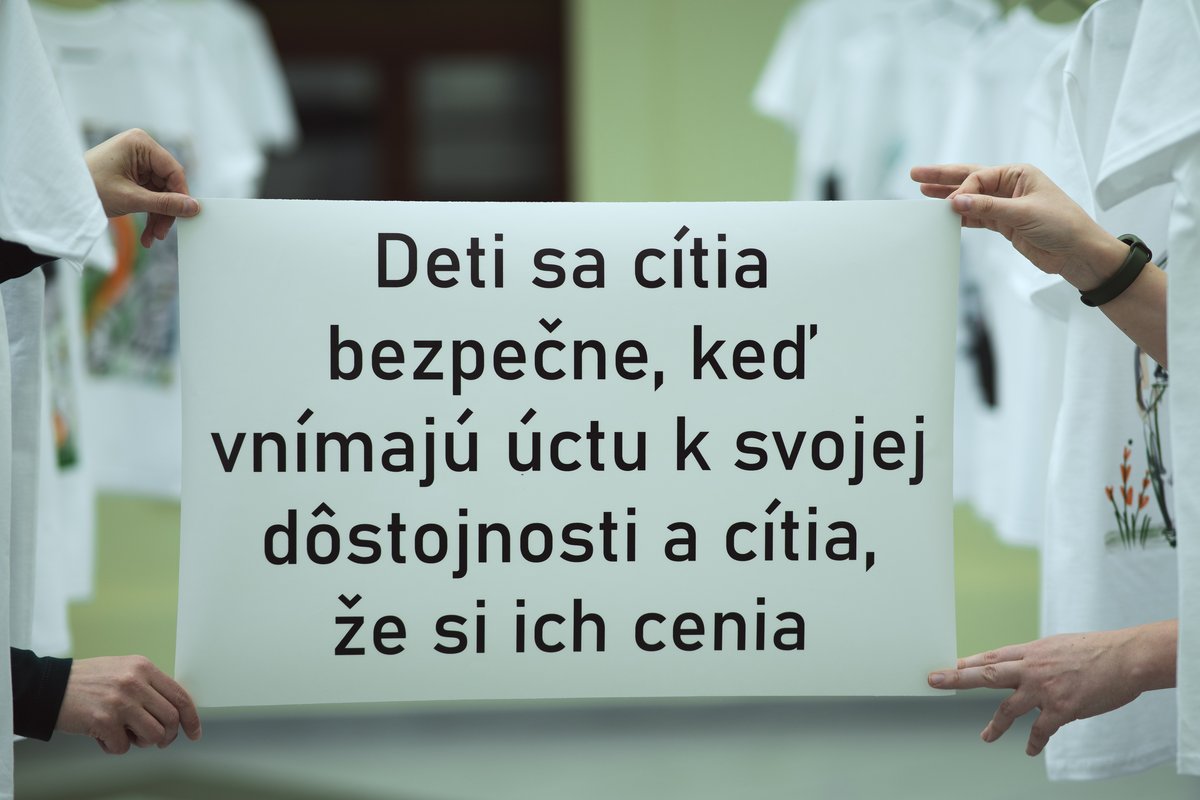"Guarding Children’s Safety" – an international artistic safeguarding project was presented in Slovakia
On May 2, the Child Dignity Center of the Ukrainian Catholic University, in collaboration with the Faculty of Theology of the Catholic University in Ružomberok, presented the project “SAFEGUARDING: Child Safety in the Church Environment” in Košice, Slovakia. The event also included the opening of the exhibition-installation “ROZPOZNAŤ. REAGOVAŤ” (“Recognize. React”).
The “SAFEGUARDING” project is an online course about child safety designed for clergy, consecrated persons, and laity, jointly created by child protection experts from the Catholic Churches of six countries: Ukraine, Slovakia, Poland, the Czech Republic, Croatia, and Hungary. The exhibition-installation “Recognize. React.” encourages public dialogue about adults’ responsibility for child safety, emphasizing everyone’s duty to recognize violence and respond appropriately.
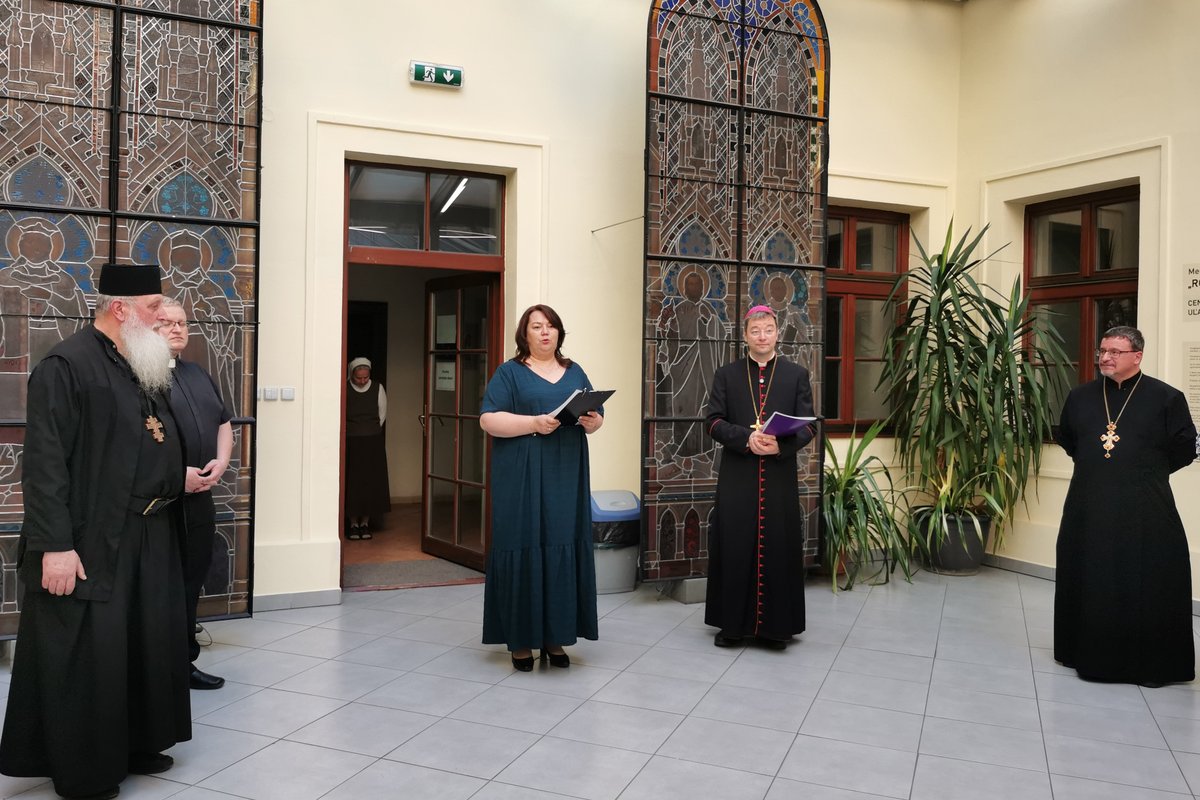
Bishop Marek Forgáč, Auxiliary Bishop of the Archdiocese of Košice and Chair of the Slovak Bishops' Conference Commission for the Protection of Minors in the Church, remarked during the exhibition opening:
“I believe this is the first time in Slovakia that we can present work in such a format. You are suffering from war, and perhaps because of that, you are more sensitive to any violence you find around you. I sincerely hope this exhibition will help us recognize the suffering of others so that we can respond to it and take effective action.”
Ivanka Rudakevych, project coordinator, co-author of the course, and head of projects and programs at the Child Dignity Center of UCU, emphasized the importance of international cooperation in protecting children from violence and creating a safe space for their growth:
“This is the second exhibition taking place abroad. After Warsaw, today we are in Košice, Slovakia. This international collaboration is very important because it is crucial for us to speak together about the child’s right to safety. As countries with a shared historical context—Eastern European countries—having a common voice will bring us greater mutual support and strength.”


Ulyana Krekhovets, an artist, icon painter, and head of art projects and programs at the Development Department of the Ukrainian Catholic University, created the illustrations for the online course. These are sketches in which she captured the emotions she experienced when first hearing the texts about violence against children and the protocols for response and protection. She was inspired by the style of traditional folk glass icons. Later, over 100 of these sketches were printed on T-shirts that formed the art installation.
As part of the project opening, the artist conducted a guided tour and shared the story behind the creation of the sketches and the meanings of the exhibition.
"In the illustrations I created for this course, it is not about high art, technique, or style, but more about the experience itself and the meanings that the drawing conveys. It has long been known that art is not only about beauty; art has become deeply social. First and foremost, art must respond to the meanings experienced by any society," shared Ulyana Krekhovets.
Each individual T-shirt represents an experience that a person carries with them, and together they form a crowd. This is a very diverse experience: for some, it is a memory of a happy childhood, while for others, it signifies devaluation, cruelty, and violence. As we move through the crowd in our daily lives, do we notice those who need help? Do we know how to recognize and respond properly to violence against children? According to the organizers, the idea behind the installation is for every adult to become aware of their own responsibility for the safety of children, to not remain indifferent, and to respond promptly. The language of art has become a universal way to convey the important meanings of preventing violence against minors.
Sister Agnieszka Ewa Jarkowska, co-author of the course from Slovakia, educator and safeguarding expert, delegate for prevention and protection of minors from violence in the vice-province of the Capuchin Sisters in Poland, and former member of the Child Protection Center in Košice as well as the Episcopal Commission for the Protection of Children from Violence in Slovakia, shared:
“I believe this is a very original and unique project. Not only because it contains knowledge, but because it has a creative side. Difficult topics can be presented through art, through sketches, through symbols. Moreover, we can use this in prevention — for example, a symbol like a child within a dim circle. We can ask, ‘Do you think this child is in a safe environment? When do you feel safe, and when not?’ Such topics have greater potential to be revealed and to convey meaning through art.”
Sister Agnieszka Jarkowska also spoke about the historical particularities of the project countries. Their shared post-communist experience allows for a deeper understanding of issues related to violence against children and vulnerable adults. It is also a good opportunity to overcome challenges and further develop safeguarding programs in our countries:
“This collaboration of ours — Polish, Ukrainian, Slovak, Czech, Hungarian, Croatian — we share something in common. We have a different perspective on this topic. We share a similar attitude towards children. So, we can cooperate, help one another, and create programs. We can develop these programs somewhat differently because we have a shared history, and these programs should correspond to the norms we live by and the needs we have.”
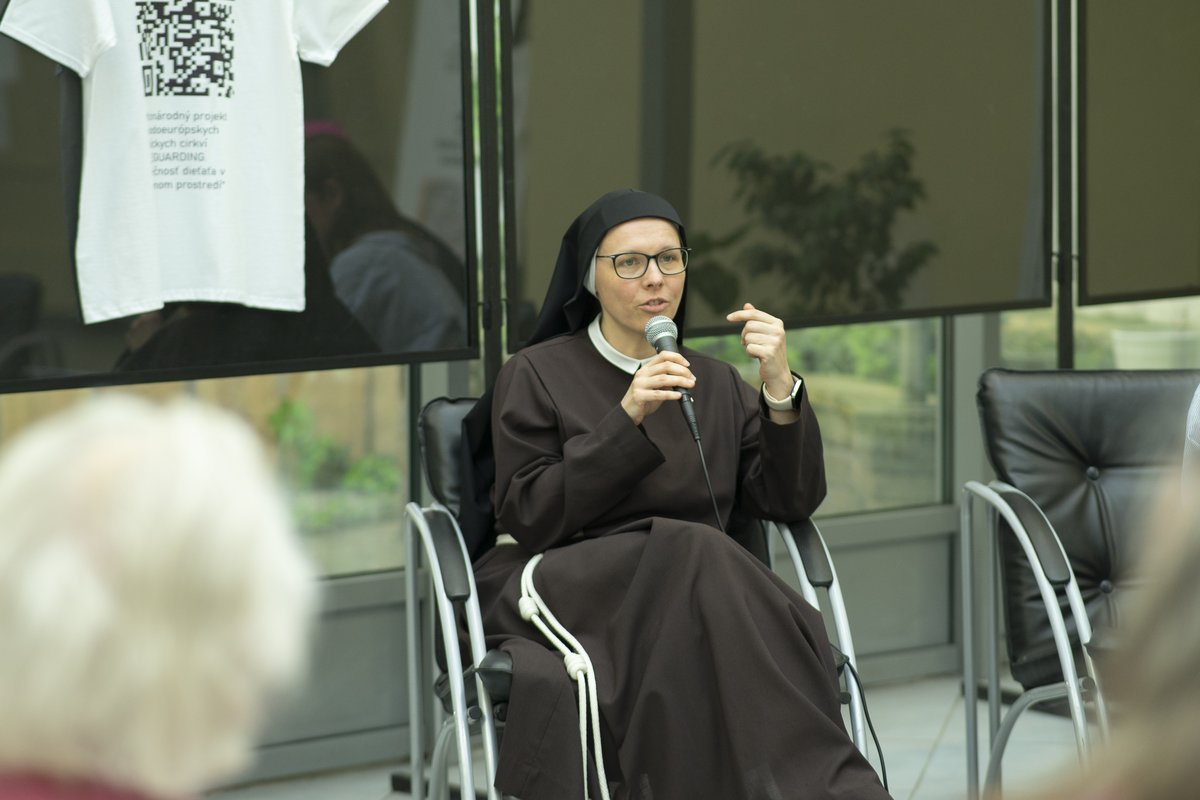
Father Radoslav Loyan, Dean of the Faculty of Theology at the Catholic University in Ružomberok, was responsible for organizing the exhibition in Košice. He emphasized the importance of cooperation between the two universities and highlighted the Church’s readiness to care for child protection and openly discuss this important topic.
“Theological Faculty of the Catholic University in Košice offers the course ‘Safeguarding: Child Safety in the Church Environment’ as part of its responsibility within the Church and for the public sphere on this rather taboo subject — the protection of minors. This topic is not unknown within the Church; on the contrary, we do talk about it. The exhibition complements this topic for a wider audience. We are very pleased to cooperate with our partners from the Catholic University in Lviv,” shared the dean.
Bishop Marek Forgáč, Auxiliary Bishop of the Archdiocese of Košice and Chair of the Commission of the Conference of Slovak Bishops on the Protection of Minors, emphasized the importance of working preventively and acting proactively to prevent violence from occurring. He explained that both the course and the exhibition serve as educational tools that raise awareness within the Church and society on these issues and promote greater responsibility among every adult interacting with children.
He noted:
“Unfortunately, there are facts that situations of violence against children have occurred, some of which remain unresolved and unexposed. Therefore, it is very important to approach this topic preventively. We need to provide truthful and honest information about such matters. We must train those who bear responsibility so that they can prevent or protect children. We must create sensitive conditions to see and detect such cases. Preventive measures like this exhibition are necessary for that.”
The course SAFEGUARDING: Child Safety in the Church Environmentis freely available to anyone interested on the UCU-Online platform after registration.
Photo by: Nataliya Zaikovska.
The project was created by the Child Dignity Center of the Ukrainian Catholic University (cdc@ucu.edu.ua; +38 098 730 1926).
